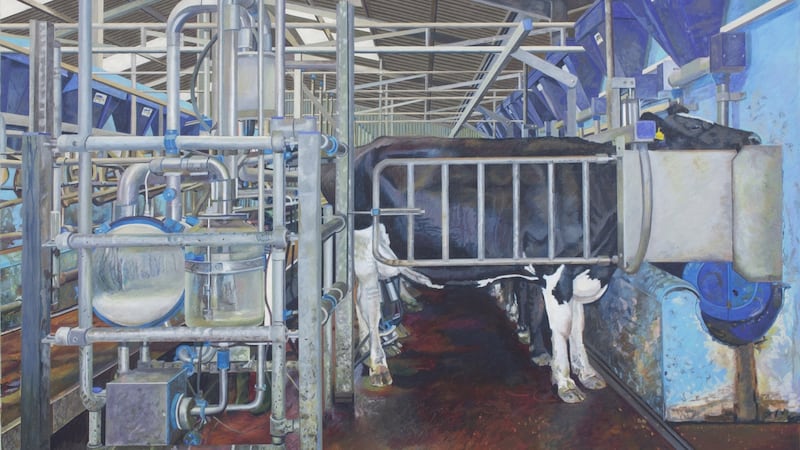Farms don't feature much in art, except as bucolic backdrops in landscape scenes and pastoral vistas. This makes a new exhibition at Limerick City Gallery of Art all the more intriguing. It's by the artist Mary Burke who was commissioned by the gallery to draw the barnyards, fields and livestock of five different Limerick farms.
For Burke it was an opportunity to change direction after four decades of focusing almost exclusively on suburban scenes; capturing the humble homeliness of streetscapes in exhibitions titled Suburbanscapes (1992), Suburban Shadows (2010) and Suburban Narratives (2016).
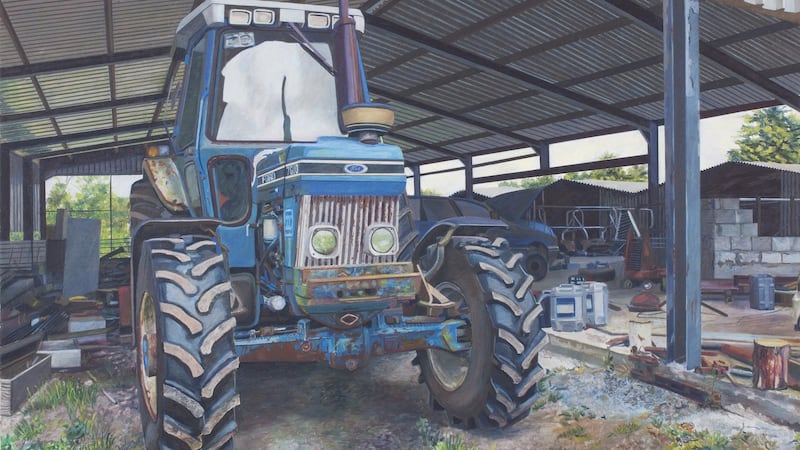
“It’s either an exciting new opportunity or a reckless mistake,” says Burke with a laugh. “But I just had to do it. I really wanted to capture the essence of these farms, while avoiding the tendency to romanticise the Irish landscape. These are working farms, that are functional and lived-in. I wanted to convey a sense of the industrial farm infrastructure against the natural landscape.”
It was the commitment of the farmers that inspired her, from "John Macnamara who is thoroughly obsessed with the quality of his grass," to "the wonderful treasure trove of curiosities that Morgan Murphy has amassed in his barns and outbuildings". She talks with equal enthusiasm about Dan Browne's majestic barn and traditional farm buildings in Thomastown, June Danaher's fine pedigree limousine suckler calves in Shanagolden and David Ryan's lakeside farm at Lough Gur abutting a 15th-century castle.
The exhibition, titled At Home on the Farm, runs until May 2nd, 2021. There are market walks, farm poetry, soundscape work and a selection of online webinars, running in conjunction with the exhibition, starting at 3pm on February 27th with a conversation between Mary Burke and the art historian Dr Niamh NicGhabann. limerickgallerypages.com
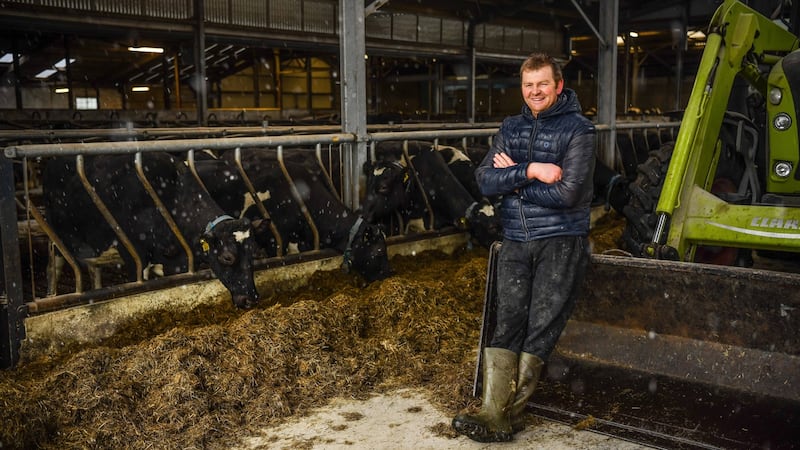
John Macnamara is a pioneer of intensive grass-growing on his 116 hectare farm in Hospital, Co Limerick. “This amazing resource is growing just five yards from my back door, so why would I not take advantage of it?” he says. “It means I don’t need to import other, more expensive, feed from abroad. It’s far cheaper than anything else available and a better product.”
He walks the farm at least once a week, gauging the growth of every paddock and deciding what inputs, if any, are needed to ensure the highest-quality grass that can feed the milking herd of dairy cows for about two days before they are moved on. “A cow eats 18kg of dry matter per day, so you can gauge exactly what’s needed. It takes the guessing out of it. Farming has become a business, or a science, even.”
This is the future of farming
His work reaps rewards, but also takes a toll on the soil. “We do have to add chemical fertiliser, with slurry recycled back into the soil as well.” He also regularly reseeds the paddocks with new, more modern, varieties of grass that are engineered to produce maximum milk proteins, though they are less attractive to native fauna.
Dairy farming is now a high-tech business, with each of Macnamara’s cattle wearing digital sensors that constantly report their movements and their milk production to an app on his phone. All this information is fed into a computer which then plots a management strategy for the farm. “This is the future of farming,” says Macnamara.
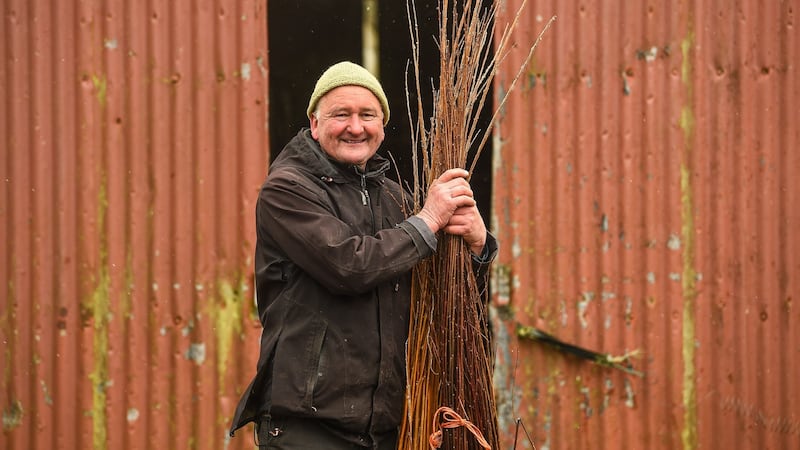
Morgan Murphy, a suckler farmer in Kilmallock, Co Limerick, is in the midst of transition: "Moving backwards," as he says, towards traditional methods. "I did a blacksmith's course and basket weaving and bee keeping. The idea of growing willow on the land and then moulding it into baskets with my own hands appeals to me."
The fact that some of his pastureland has never been reseeded is a matter of great pride. “It’s unchanged since the Ice Age, with all the traditional varieties of herbs and wild grasses still there. I’m committed to safeguarding the natural, native pasture here.”
He worries about the gradual deterioration of soils and natural habitats in Ireland, especially what's happening on more intensive farms. But, he also has sympathy for how challenging it is for the intensive farmers who must work day and night, because their loans and overheads are so vast. That said, for him personally farming has been a good life, "I'm living in paradise here," he says. "I get to walk a few kilometres around the farm each morning counting cattle before coming home for breakfast. Other people have to retire before they get a chance to do something like that."
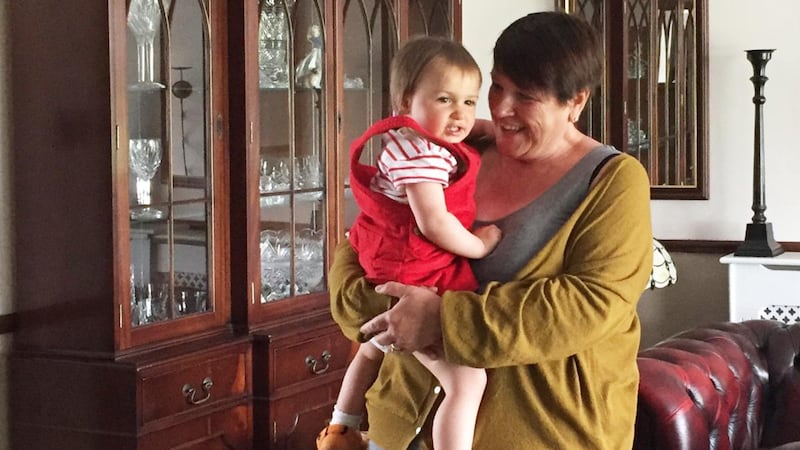
June Danaher, originally from north Lincolnshire has been farming in Shanagolden for 40 years, having married into a local family farm. She raises pedigree limousine cattle. "When people think of farming they think of men, but women have always been the backbone of farms. Historically, it was often they who were left to run the farm."
The greatest source of pleasure and pride for Danaher is her social farming programme, in which people with intellectual disabilities spend a day each week on her farm doing gardening or making bat boxes or feeding her menagerie of goats, alpacas, donkeys, chickens, ponies and ducks.
“Farming is a great therapy for all of us,” she says, “as animals don’t judge who is minding them. They don’t care who you are, but they care how you treat them. It’s very important that you show them patience and kindness. If you can carry that into different aspects of your life it has a huge benefit for your mental and physical wellbeing.”
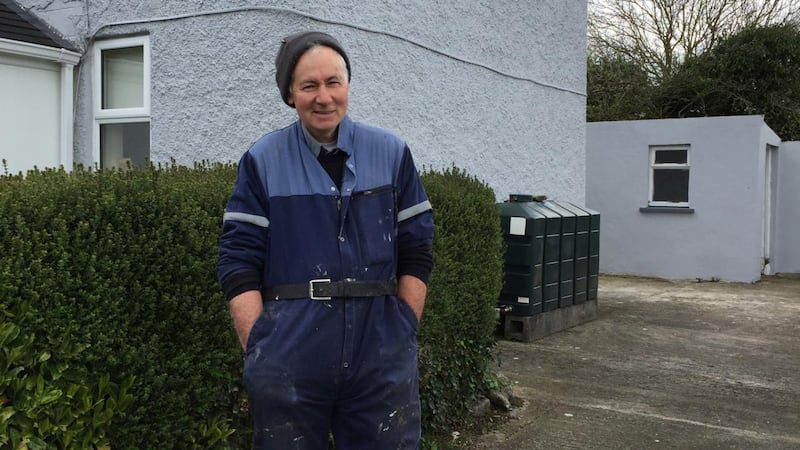
Dan Browne farmed a 50-strong dairy herd on 83 acres in Thomastown, Kilmallock, until he retired some years ago. His land is now leased out, as his son is unlikely to continue the tradition of the previous three generations of Brownes. "My grandfather fought in the War of Independence and the Civil War and once all the fighting was done and dusted, he came here to Thomastown and built this house in 1925."
His father took over the farm, and then Dan joined him until he “had to give up when my back started giving trouble.” The fact that he managed to raise five children on what would now be considered an untenably small herd of 50 cows is a point of pride. “And all five of them went to college too,” he says. “It just proves that it can be done.”
Pay the farmers a proper price for their milk, and then they won't need the same volume of cattle
Much of the traditional layout of his farm has been preserved thanks to Rural Environment Protection Scheme subsidies which encouraged him to maintain some of the old farming practices and features. “I was able to keep all the old ditches and hedgerows intact, and also some of the farm buildings that my grandfather built. But the intensive farmer has no time for ditches. They wipe them out to extend their ground.”
He is concerned about the direction that farming is taking. “You’d need 200 cows or more now, and unfortunately you need a lot of inputs and intensive grassland management.” The way to stop this “is to pay the farmers a proper price for their milk, and then they won’t need the same volume of cattle to earn a fair wage. That’s what they’ll have to work on if they really want to stop this pollution and all”.
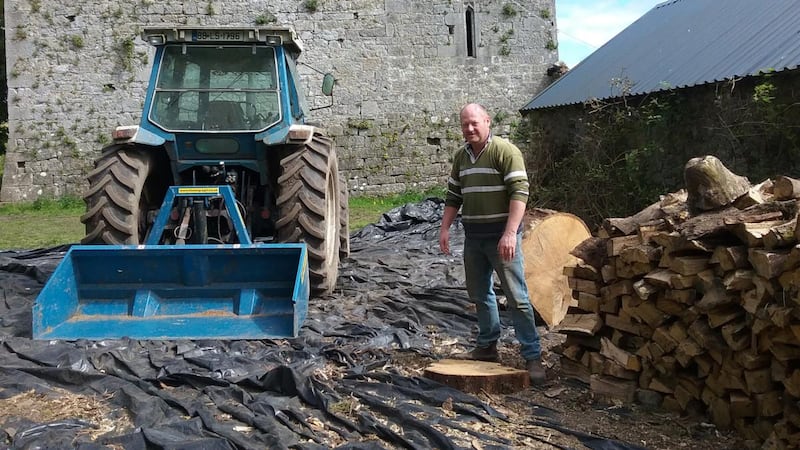
David Ryan has a suckler herd of about 130 cattle on the shores of the legendary and eerily mysterious Lough Gur, regarded as one of the principal entrances ways to Tír na nÓg. The farm was bought by his great-grandfather, Thomas Ryan, in 1891. "He milked cows here, as did my father too for a short period. But, the land wasn't really suitable for dairying here. The hills of Lough Gur mostly only provide rough grazing."
He could have reseeded the whole farm, but a significant part of it is on Knockadoon Hill, which is of archaeological importance and protected by the State. “You wouldn’t be allowed to plough it or do anything with it. But even if it wasn’t protected, it would be hard to reseed because there’s a lot of stone and rock up there and it’s fairly sloped.”
He believes farming is a good life, overall. “At least, you’re out in fresh air and you get regular exercise, and you can be your own boss. But, it can be a quiet life. Solitary.”
He hopes that Burke’s exhibition might give people a better appreciation of what farming entails. “In my experience, urban people don’t understand farming at all. I worked part-time in pubs in Limerick city, and I found that people would ask you questions that made clear they didn’t have a clue about modern farming. They think I’d have chickens and hens, and a horse and cart. They picture a farm like it was in the 1950s.”
